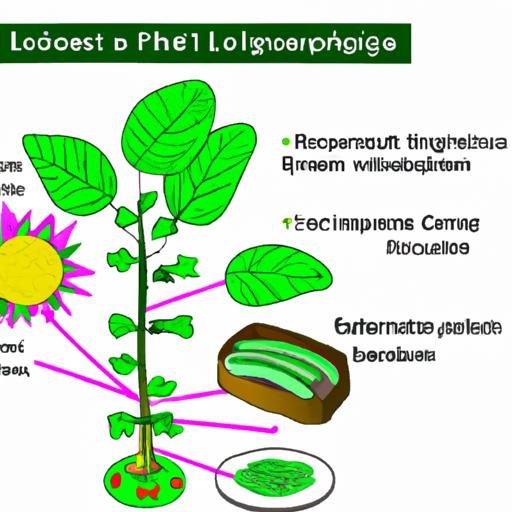Introduction
When it comes to gardening and nurturing plants, understanding the importance of soil composition is crucial. The type of soil plays a significant role in determining the success and vigor of plant growth. Today, we shift our focus to sandy soil and explore the intriguing question: will plants grow in sand?
As we embark on this journey, we’ll uncover the unique characteristics of sandy soil and the challenges it presents for plant growth. While sandy soil may pose some obstacles, we’ll also discover ways to overcome them and maximize the potential for lush greenery in your garden.
Importance of Soil Composition in Plant Growth
To truly grasp the impact of soil composition on plant growth, we must recognize its significance. Soil serves as the foundation for plants, providing essential nutrients, water, and support. Different types of soil possess varying properties that directly influence a plant’s ability to thrive.
Focus on the Viability of Plant Growth in Sandy Soil
Sandy soil, as the name suggests, is predominantly composed of sand particles. It is characterized by its loose texture, excellent drainage capabilities, and low water-holding capacity. However, these very traits can pose challenges for aspiring gardeners.
The absence of sufficient nutrients and the rapid drainage of water in sandy soil can hinder plant growth. The lack of moisture retention also means plants may struggle to access the water they need to survive. But fear not, as we delve deeper into this subject, we’ll uncover strategies to overcome these obstacles and create a flourishing oasis even in sandy soil.
In the upcoming sections, we’ll explore the unique characteristics of sandy soil, evaluate its impact on plant growth, and discover the types of plants that thrive in this environment. Additionally, we’ll provide practical tips and techniques to make your sandy soil garden a resounding success. So, let’s dive in and unlock the secrets of growing plants in sand!
Understanding Sandy Soil
Sandy soil, with its unique properties and composition, poses both challenges and opportunities for plant growth. Let’s delve into the characteristics of sandy soil, explore the nutrient deficiencies it presents, and understand the drainage and water retention issues associated with this type of soil.
A. Characteristics of Sandy Soil
Sandy soil is known for its loose texture and coarse particles. It feels gritty to the touch and drains water rapidly. These particles are larger compared to other soil types, creating ample spaces between them. As a result, sandy soil has excellent aeration, allowing roots to breathe and preventing waterlogging.
However, due to its loose structure, sandy soil is unable to retain moisture effectively. This means that plants growing in sandy soil may face challenges in accessing sufficient water for their growth and development. Additionally, the loose nature of sandy soil makes it prone to erosion, as it cannot hold onto nutrients and organic matter as well as other soil types.
B. Nutrient Deficiencies in Sandy Soil
One of the primary concerns with sandy soil is its poor nutrient-holding capacity. Sandy soil often lacks essential nutrients like nitrogen, phosphorus, and potassium, making it less fertile than other soil types. These deficiencies can restrict plant growth and lead to stunted or unhealthy plants.
To address nutrient deficiencies, it is crucial to regularly monitor the nutrient levels in sandy soil and provide appropriate supplementation. This can be done through the addition of organic matter, such as compost or well-rotted manure, which improves the soil’s fertility and nutrient retention capabilities.
C. Drainage and Water Retention Issues in Sandy Soil
While sandy soil’s excellent drainage is favorable for preventing waterlogging, it can also be a double-edged sword. The rapid drainage characteristic of sandy soil means that water moves through it quickly, often taking valuable nutrients along with it. This poses a challenge for plants that require consistent moisture levels.
Moreover, sandy soil’s low water-holding capacity can lead to drought stress for plants, especially during dry periods. Adequate irrigation techniques and water management strategies are essential to ensure plants receive the moisture they need for healthy growth.
In the next section, we will explore whether plants can thrive in sandy soil and the factors that influence their growth in this challenging environment. Stay tuned as we uncover the secrets to successful plant cultivation in sandy soil!
Will Plants Thrive in Sand?
Exploring Plants Adapted to Sandy Soil
While sandy soil can present challenges for plant growth, there are several plant species that have adapted to thrive in such conditions. These plants have evolved mechanisms to extract necessary nutrients and moisture from sandy soil, allowing them to flourish in environments that would hinder other plants. By selecting these resilient species, you can ensure a successful garden even in sandy soil.
Factors Influencing Plant Growth in Sand
To understand the viability of plant growth in sandy soil, it’s crucial to examine the key factors that influence plant development in this environment. By addressing these factors, we can optimize the conditions and provide the necessary support for plants to thrive.
Water Availability and Irrigation Techniques
Water availability is one of the primary concerns when it comes to growing plants in sandy soil. Due to its rapid drainage properties, sandy soil often struggles to retain moisture, making it challenging for plants to access the water they need. Implementing proper irrigation techniques becomes essential to ensure plants receive adequate hydration. Drip irrigation or soaker hoses can be effective methods to deliver water directly to the plant’s roots, reducing water loss through evaporation.
Nutrient Supplementation and Fertilization
Sandy soil is notorious for its nutrient deficiencies, as the loose structure allows essential minerals to leach out quickly. To counteract this, nutrient supplementation and fertilization play a vital role. Incorporating organic matter, such as compost or well-rotted manure, can help enrich the soil and provide necessary nutrients for plant growth. Additionally, using slow-release fertilizers can ensure a steady supply of nutrients over an extended period, supporting healthy and robust plant development.
pH Adjustments and Soil Amendments
Sandy soil typically tends to be more acidic due to the leaching of basic minerals. Adjusting the pH level becomes crucial to create an optimal environment for plant growth. Conducting a soil test can provide valuable insights into the pH of the soil, allowing for targeted amendments. Adding lime or other suitable materials can help raise the pH and create a more favorable growing medium for plants in sandy soil. Furthermore, incorporating organic matter can improve soil structure, enhancing water and nutrient retention capabilities.
By addressing these factors and implementing appropriate techniques, we can create an environment in sandy soil that promotes healthy plant growth. In the upcoming sections, we’ll explore the specific plant selections suitable for sandy soil and provide expert tips to maximize your gardening success. So, let’s continue our journey and uncover the secrets of cultivating a thriving garden in sandy soil.
Selecting Plants for Sandy Soil
Sandy soil may present challenges, but it also offers opportunities for cultivating a wide variety of plants that are well-suited to its unique characteristics. By selecting the right plant species, you can create a vibrant and flourishing garden even in sandy soil. Let’s explore some of the plant options that thrive in this environment:
A. Drought-Tolerant Plant Species Suitable for Sandy Soil
Drought-tolerant plants are an excellent choice for sandy soil due to their ability to withstand dry conditions and thrive with limited water availability. These resilient species have adapted to arid climates and are equipped to survive in sandy soil. Some popular drought-tolerant plants suitable for sandy soil include:
- Succulents: With their water-storing leaves and fleshy stems, succulents like cacti and agaves are a perfect match for sandy soil.
- Lavender: Known for its fragrant blooms and silvery foliage, lavender is a hardy perennial that thrives in sandy soil.
- Yarrow: This versatile flowering plant boasts clusters of colorful flowers and can tolerate sandy soil with ease.
B. Ornamental Plants and Flowers Thriving in Sandy Soil
If you’re looking to add beauty and visual appeal to your sandy soil garden, a wide range of ornamental plants and flowers can flourish in these conditions. These plants not only enhance the aesthetics of your garden but also adapt well to the unique characteristics of sandy soil. Consider incorporating the following options:
- Black-eyed Susan: With its vibrant yellow petals and dark centers, this summer-blooming perennial adds a pop of color to sandy soil gardens.
- Butterfly Weed: As the name suggests, this native wildflower attracts butterflies and thrives in sandy soil with its striking orange blooms.
- Russian Sage: This hardy perennial boasts silver-gray foliage and delicate lavender-blue flowers, making it an elegant addition to sandy soil gardens.
C. Edible Crops and Vegetables Suitable for Sandy Soil
Don’t let sandy soil deter you from growing your own fresh produce. While sandy soil may not naturally retain moisture and nutrients, there are several edible crops and vegetables that thrive in these conditions. Consider the following options for a bountiful sandy soil garden:
- Carrots: This root vegetable can tolerate sandy soil and rewards you with delicious, sweet harvests.
- Radishes: Fast-growing and adaptable, radishes flourish in sandy soil, producing crisp and peppery roots.
- Peppers: Whether it’s bell peppers or chili peppers, these heat-loving crops can thrive in sandy soil and bear abundant fruits.
By selecting drought-tolerant plant species, incorporating ornamental plants and flowers, and cultivating edible crops suited for sandy soil, you can create a diverse and thriving garden that defies the odds. With the right plant selection, sandy soil can transform into a canvas for beauty and abundance.
Tips for Growing Plants in Sand
A. Preparing the Soil for Planting
Before diving into planting, it’s essential to prepare the sandy soil to ensure optimal conditions for plant growth. Here are a couple of crucial steps to follow:
1. Soil Testing and Analysis
Begin by conducting a soil test to determine the nutrient deficiencies present in your sandy soil. This analysis will help identify which essential elements are lacking and guide you in selecting the appropriate amendments or fertilizers. By addressing these deficiencies, you can create a more fertile environment for your plants to thrive.
2. Improving the Soil Structure
To enhance the structure of sandy soil, incorporating organic matter is key. Adding compost, well-rotted manure, or other organic materials can help improve both the water-holding capacity and nutrient retention of the soil. These additions will help create a more stable environment for your plants’ roots and promote healthy growth.
B. Proper Watering and Irrigation Techniques
One of the significant challenges of gardening in sandy soil is its tendency to drain water quickly. To ensure your plants receive adequate moisture, it’s crucial to employ proper watering and irrigation techniques.
Rather than frequent shallow watering, which can lead to water runoff, aim for deep, infrequent watering sessions. This encourages plants to develop deeper root systems, enabling them to access water stored in the lower layers of the soil. Additionally, consider using mulch around your plants to help retain moisture and prevent evaporation.
C. Fertilization and Nutrient Management Strategies
Sandy soil often lacks essential nutrients necessary for plant growth. To address this issue, implementing effective fertilization and nutrient management strategies is vital. Consider the following:
- Choose slow-release or organic fertilizers that gradually release nutrients over time, ensuring a steady supply for your plants.
- Apply fertilizers in smaller, more frequent doses to prevent excess leaching due to the fast-draining nature of sandy soil.
- Incorporate micronutrients into your fertilization routine, as sandy soil tends to be deficient in these essential elements.
Regularly monitor your plants for any signs of nutrient deficiency and adjust your fertilization approach accordingly. By maintaining a balanced nutrient profile, you can support healthy growth and vibrant foliage in your sandy soil garden.
With these tips in mind, you can confidently navigate the challenges of growing plants in sandy soil. By adequately preparing the soil, adopting proper watering techniques, and implementing effective nutrient management strategies, you’ll create an environment where plants can flourish, even in the face of sandy adversity.
Conclusion
In conclusion, the question of whether plants will grow in sand can be answered with a resounding yes. While sandy soil may present challenges, it is entirely possible to create a thriving garden in this unique environment.
By understanding the characteristics of sandy soil and its impact on plant growth, we can make informed decisions and implement effective strategies. Choosing plants that are well-adapted to sandy soil, ensuring proper irrigation and nutrient management, and amending the soil when necessary are key steps to success.
Gardening in sandy soil offers its own set of benefits. The excellent drainage properties of sand prevent waterlogged roots and reduce the risk of root rot. Additionally, sandy soil warms up quickly in the spring, allowing for earlier planting and extended growing seasons.
So, don’t let the sandy soil deter you from pursuing your gardening dreams. Embrace the unique challenges it presents and use them as an opportunity to explore new plant species and experiment with different cultivation techniques. With the right knowledge and a little perseverance, your sandy soil garden can become a vibrant and thriving oasis.
Remember, every garden is a labor of love, and the rewards are immeasurable. So, grab your gardening tools, prepare your sandy soil, and watch as nature works its magic. Happy gardening in the sandy wonderland!
“The glory of gardening: hands in the dirt, head in the sun, heart with nature. To nurture a garden is to feed not just the body, but the soul.” – Alfred Austin




